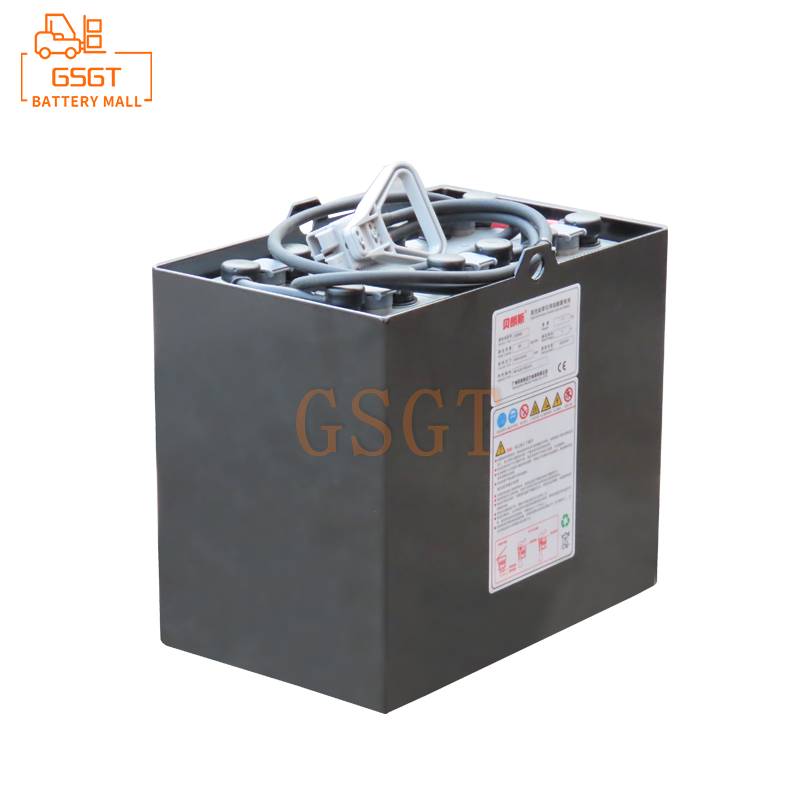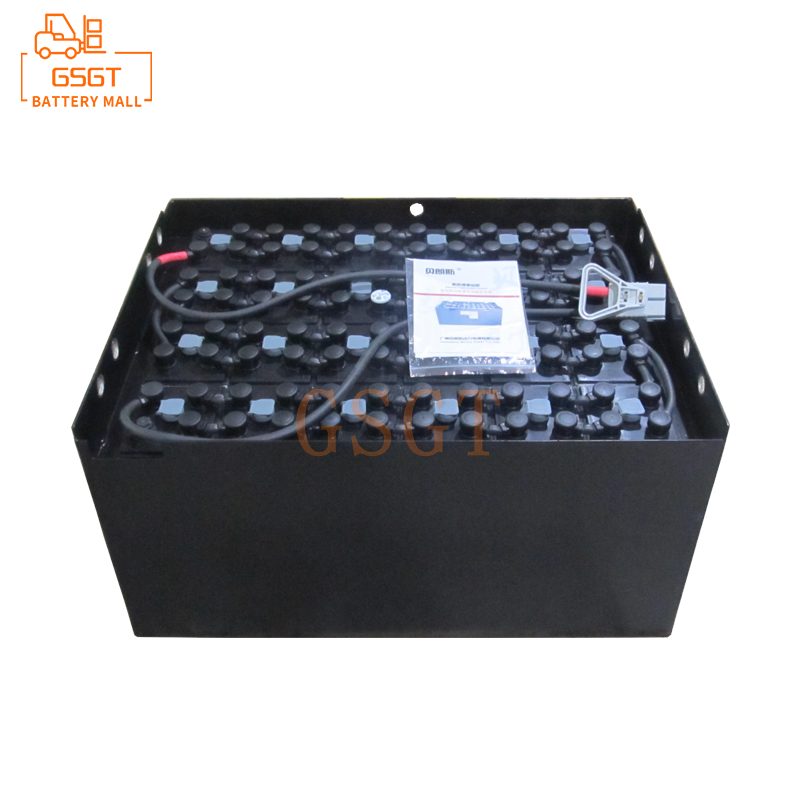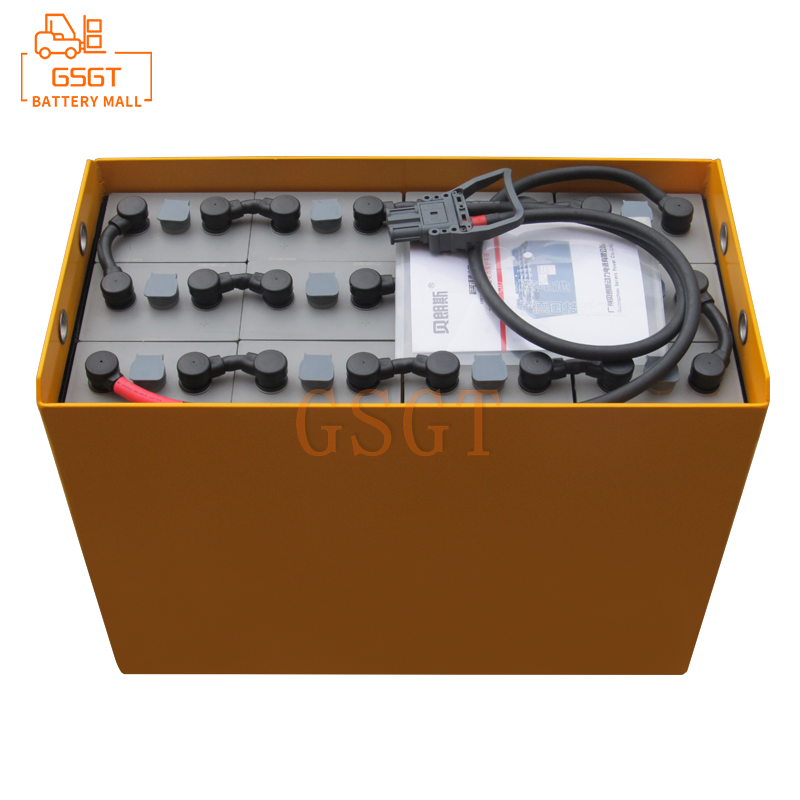Time:2025-07-14 10:28:10
Browse:616
In the daily use of forklifts, the charging process of lead-acid batteries is of vital importance. The correct charging procedure not only extends the service life of the battery but also ensures the normal operating efficiency of the forklift. The following is a detailed introduction to the normal charging process of lead-acid batteries for forklifts.
Preparations before charging
The preparatory work before charging is the foundation for ensuring charging safety and charging effect, and cannot be ignored. First of all, a comprehensive inspection of the appearance of the lead-acid battery of the forklift should be carried out. Carefully inspect the battery casing for any damage or cracks. If such conditions exist, it may lead to electrolyte leakage, which not only affects the charging effect but also poses safety hazards. The battery needs to be replaced in a timely manner. At the same time, check if the battery is swollen. Swelling is usually caused by overcharging or internal faults of the battery. If swelling is found, charging operation should not be carried out. Professional personnel should be contacted for maintenance.
Secondly, check the terminals of the battery. Check if there is any oxidation or corrosion on the terminals. If so, rinse them clean with hot water and then dry them with a dry cloth to ensure good electrical conductivity. Then, check the liquid level of the electrolyte. For maintainable lead-acid batteries, the liquid level should be 10-15mm higher than the plates. If the liquid level is too low, add distilled water to the specified height. Note that tap water or electrolyte should not be added to avoid affecting battery performance.
Finally, prepare the charger and make sure it matches the model of the battery. Check if the charger's wiring is intact, without any damage or aging, and if the plug and socket are functioning properly. Park the forklift in a well-ventilated area away from fire and heat sources. Turn off the power of the forklift and unplug the battery.
Operations during the charging process
After everything is ready, the charging operation begins. First, connect the output terminal of the charger to the terminals of the battery. Make sure the positive and negative terminals are connected correctly. Connect the red wire to the positive terminal and the black wire to the negative terminal. The connection should be firm to avoid poor contact causing sparks. Then, plug the input end of the charger into the power socket, turn on the switch of the charger. At this point, the charger starts to work and parameters such as charging voltage and current will be displayed on the screen.
During the charging process, the charging current and voltage should be set reasonably. Generally speaking, for batteries that have been charged for the first time or deeply discharged, a slow charging mode should be adopted, with the charging current set at about 10% of the battery capacity. During normal recharging, the charging current can be appropriately increased, but it should not exceed 20% of the battery capacity.
During the charging process, pay close attention to the status of the battery and observe whether there are any abnormal phenomena such as heating or emitting gas. If the battery temperature exceeds 45℃, the charging current should be immediately reduced or charging suspended. Wait until the temperature returns to normal before resuming charging. At the same time, the charging time should be recorded. Generally, the charging time of the battery is about 8 to 10 hours. When the charger shows that the charging is complete or the current drops to the lowest value, it indicates that the charging is about to end.
Post-charging handling
After charging is complete, first turn off the switch of the charger, then unplug the input plug of the charger, and then disconnect the charger from the battery. Note to unplug the negative terminal first and then the positive terminal to avoid sparks. Plug the battery plug back into the forklift and make sure it is firmly connected.
Clean the environment around the battery, wipe off the dust and traces of electrolyte on the battery surface, and keep the battery clean and dry. Check whether the wiring and plug of the charger are in good condition, and store the charger in a dry and well-ventilated place.
Inspect the charged battery and observe the height of the electrolyte level. If the level is lower than the specified value, add distilled water to the normal position. At the same time, measure the open-circuit voltage of the battery. If the voltage is too low, it indicates insufficient charging or a battery fault, and it needs to be recharged or repaired.
Frequently Asked Questions
Is it normal for the battery to heat up during charging?
During the normal charging process, the battery will generate a certain amount of heat. This is due to the heat produced by chemical reactions that occur during the charging process, which is a normal phenomenon. However, if the heating is too severe and the temperature exceeds 45℃, it is an abnormal situation, which may be caused by excessive charging current, charger failure or internal short circuit of the battery, etc. Charging should be stopped immediately, the cause checked and dealt with.
How should a battery be charged if it is not used for a long time?
If the lead-acid battery of a forklift is not used for a long time, it should be fully charged before storage and recharged every 1 to 2 months to prevent the battery from being discharged. When storing, the battery should be placed in a well-ventilated and dry area, avoiding direct sunlight and high-temperature environments. When recharging, slow charging mode should be adopted and the normal charging process should be followed. Charging should be stopped only after the battery is fully charged.
Can charging be interrupted during the charging process?
Under normal circumstances, it is not recommended to interrupt charging at will during the charging process, as interrupting charging will affect the charging effect of the battery, resulting in insufficient charging and shortening the battery's service life. In case of special circumstances where charging must be interrupted, the charger switch should be turned off first, then the connection disconnected. When resuming charging, the operation should be carried out again according to the charging process.
In conclusion, accurately mastering the charging process of lead-acid batteries for forklifts, making adequate preparations before charging, standardizing operations during the charging process, and handling post-charging matters are of great significance for extending the battery's service life and ensuring the normal operation of forklifts. At the same time, understanding the answers to common questions can better deal with various situations that may occur during the charging process.

$400

$5010

$4690

$2530

MESSAGE
Professional And Efficient
Security
Affordable Price
Professional Services